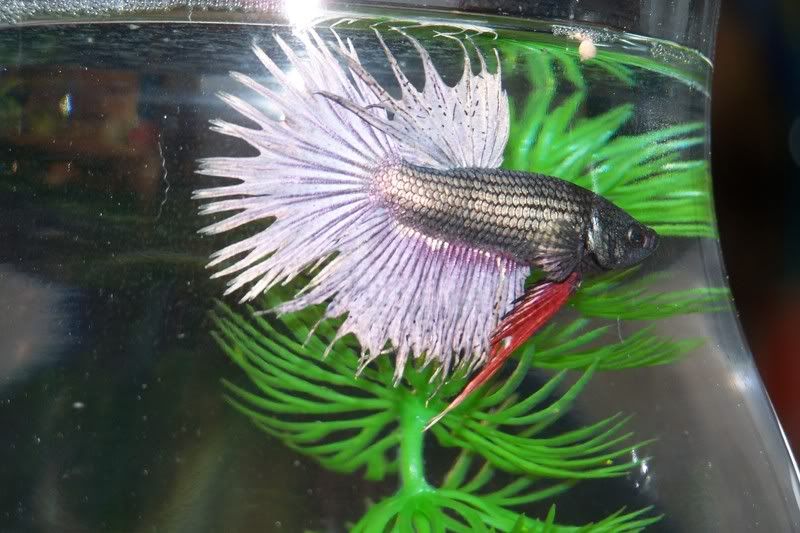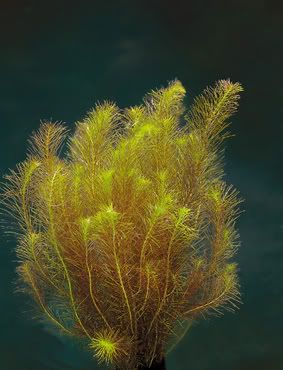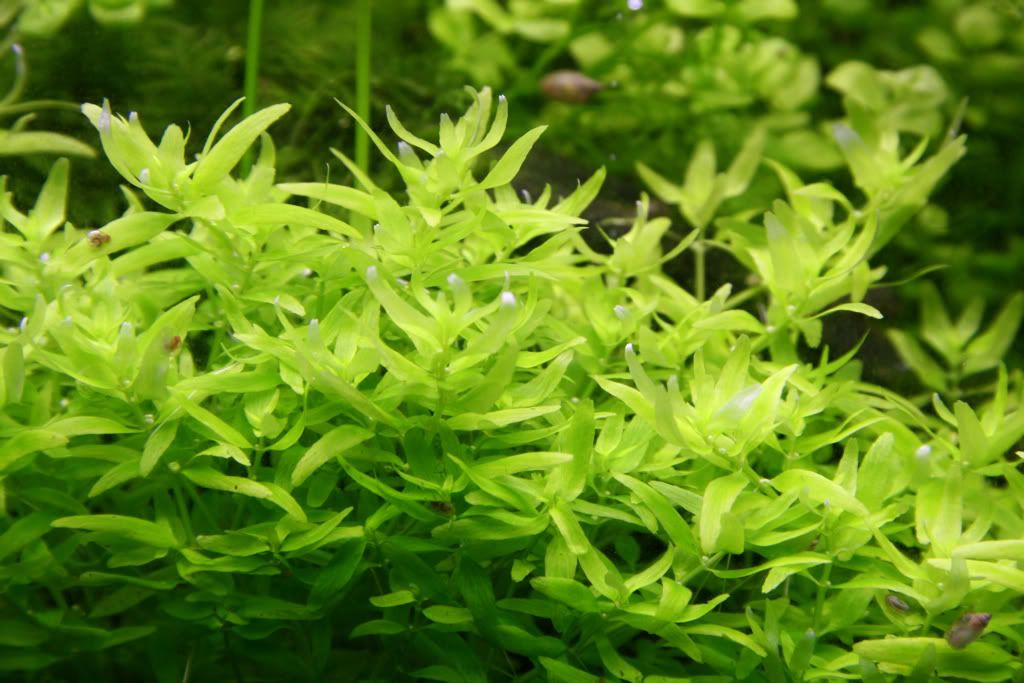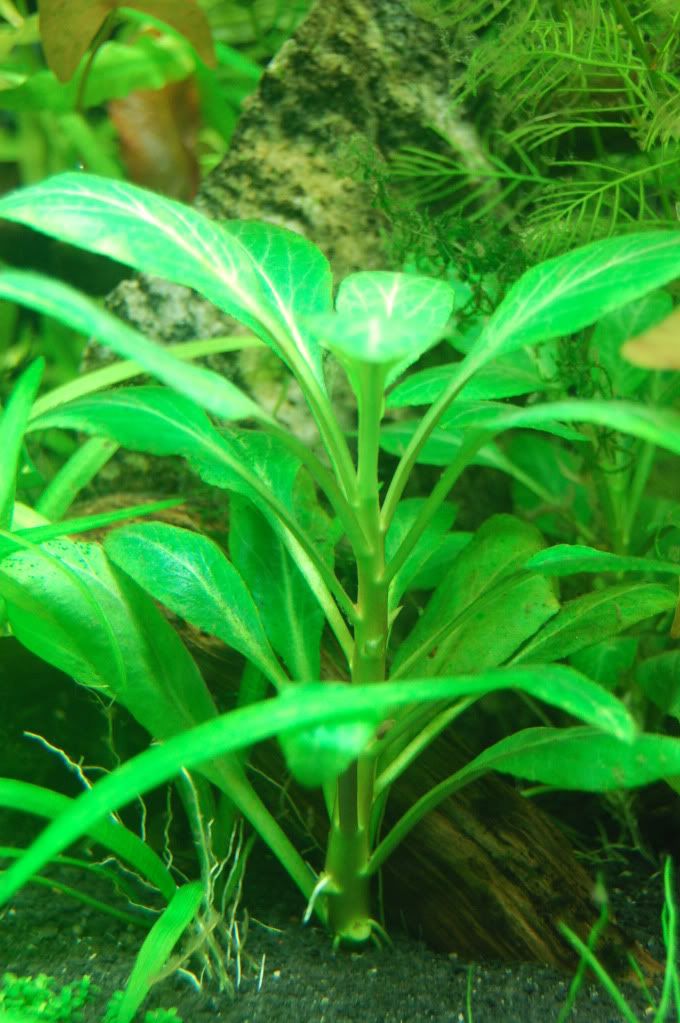Flora #27: Nymphaea lotus 'Zenkeri'
Common Name: Red Tiger Lotus
Scientific Name: Nymphaea lotus 'Zenkeri'
Local Name: Red Lotus
Origin: East Africa, Southeast Asia
Native to Philippines (Y/N): N
Light Level: Medium
CO2 Requirement (Y/N): better with CO2
Fertilizer Requirement (Y/N): Iron
Life Span:
Freshwater/Brackish/Marine: Freshwater
Water pH: 5 - 8
Water Hardness:
Common Illness/Problems: Surface Leaves
Growth: Slow
Length/Size: Height: 20-80cm (8-32in)
Difficulty: Medium
Tank Position: Foreground; Centerpiece
Water Current/Movement Issues:
General Description:
N. lotus 'Red' is a bulb plant which produces both submersed and floating leaves. Though the plant will grow under low light, higher light values should be favored by the aquarist if the formation of floating leaves is to be avoided. If these floating leaves do develop, however, it is often best to trim them before they get to the surface, since it will be difficult to discourage further foliage of this type once the plant knows where the surface is. Along these same lines, plants that already develop predominantly floating leaves can be trained to discontinue this growth habit if a vigilant trimming of developing floating leaves is practiced. Though a nutritious substrate is doubtlessly the most important factor in the successful cultivation of this plant, CO2 supplementation and the regular fertilization of both the substrate and the water column produces favorable results. However, since particularly strong specimens achieve a size that is by and large impractical for most home aquaria, most aquarists who keep this species tend to employ measures to contain it in some way. One of the most popular methods to this end is the planting of the bulb in a pot, the idea behind which being that the smaller space will better contain the plant's root system and ultimately limit its growth.
Other Important Information:
Propagation of N. lotus 'Red' can usually only be achieved if the plant is allowed to form a handful of floating leaves and subsequently develop one of its night-blooming flowers. The seeds that develop after the flower has wilted germinate easily. Bulb division, as well, is possible but is rare, and is only successful if the severed portion contains a crown from which leaves have already developed.
Source:
1] http://www.aquariumplantsandsupplies...ges/7bee_1.jpg
2] http://www.plantedtank.net/forums/my...s_Zenkeri.html
3] http://www.aquaticplantcentral.com/f...type&spec=Bulb
Results 11 to 20 of 193
-
11-28-2009, 11:05 PM #11
-
11-28-2009, 11:15 PM #12
Fauna#2: Chinese Fire Belly Newt

Common Name: Chinese Fire Bellied Newt
Scientific Name: Cynops orientalis
Local Name: Oriental Fire Belly Newt; Referred in pet shops as “fire bellied salamander” which is wrong yet commonly used.
Origin: China
Life Span:
Temperament: docile
Tank Compatibility Issue (for both Flora and Fauna): Can be mix in any variety of aquatic plants. Compatible with small fishes as long as the newt is amply fed and the fishes as long as the fishes don’t defecate too much since it may mix in the already present toxins of the newt’s skin that may cause pollution in the tank. Also, if the newts are not amply fed, it may turn on your fishes. Larger and aggressive fishes and reptiles are discouraged even tough you’ve seen it in petshops. Amphibians such as other newts and water frogs are also to be discouraged due to the possibility of aggression and cannibalism due to hunger.
Freshwater/Brackish/Marine:Freshwater
Water pH:
Water Hardness: Soft
Schooling/Non-schooling: Communal
Common Illness/Problems: Shipment stress, environmental stress, lost limbs, fungi, choked on bigger food, toxicity of water, salinity(water becomes to salty due to excess minerals), aggression towards bigger fish and non-fellow amphibians.
Growth: depends on the diet.
Length/Size: may reach about 2.2-4 inc, 6-10 cm.
Difficulty: Medium
Water Current/Movement Issues: Water must be stagnant, however, aerators and filters are allowed.
General Description: Cynops orientalis is commonly seen in pet stores, where it is frequently confused with theJapanese Fire Belly Newt (Cynops pyrrhogaster) due to similarities in size and coloration. C. orientalistypically exhibit smoother skin and rounder tails than C. pyrrhogaster, and have less obvious parotoid glands.
Chinese Firebelly Newts are mildly poisonous and excrete toxins through their skin. Consisting primarily of tetrodotoxins, newts of the genus Cynopspose a medically significant threat if enough toxins are consumed. Despite this, skin excretions alone are unlikely to be harmful to humans unless the entire animal is swallowed. Regardless, the washing of hands before and after contact with these or any amphibian is important to reduce the risk of transferring toxins or disease to and from the animal.
Other Important Information: Chinese Fire Belly newts are one of the most commonly found species in the pet trade due to extensive collection from the wild, where hundreds of thousands of individuals are collected annually. Though relatively easy to care for, many new imports die due to stress or diseases contracted during shipping. For the animals that survive shipping, mortality rates remain very high from poor husbandry received at pet stores or from the final owner. When searching for a pet firebelly it can be wise to check for local breeders, or individuals giving their pets away, as these animals are often much healthier while reducing the demand from the wild. If captive animals can not be found, be sure to buy an animal in fair condition. Open sores, missing limbs, fungus, and overly thin animals should be passed over, or even healthy-looking individuals if dead newts are present in the tank. While many people buy sick animals out of pity or with the intention of nursing them back to health, purchasing these animals simply encourages poor care on behalf of the pet store owner.
References:
http://exoticpets.about.com/cs/salam...liednewt_2.htm
http://en.wikipedia.org/wiki/Chinese_Fire_Belly_Newt
http://i612.photobucket.com/albums/t...cuddling-1.jpg
http://www.reptileforums.co.uk/amphi...caresheet.html
http://www.caudata.org/forum/f46-beg...ied-newts.html
istoryan named as Lawrence_tbs (base from his experience) laysho!
photo courtesy of storyan named as Trex
-
11-29-2009, 07:50 PM #13
Fauna#3: Dwarf Gourami

Common Name: Dwarf Gourami
Scientific Name: Colisa lalia
Local Name: Dwarf Gourami
Origin: Native in Pakistan, India and Bangladesh
Life Span: 4 years
Temperament: peaceful, docile
Tank Compatibility Issue (for both Flora and Fauna): The aquarium should be heavily planted and have at least part of the surface covered with floating plants. A darker substrate will help show-off the gourami's colors, and peat filtration is recommended. Dwarf Gouramis should not be kept with large, aggressive fish, but are compatible with other small, peaceful fish as well as with fellow gouramis. Dwarf Gouramis should not be kept in tanks with any pregnant fish(aggressive or not) as the mate will harass any fish thought to be a threat. Dwarf Gouramis are so docile that they will allow themselves to be bullied to death before fighting back. Male siamese fighting fish may attack dwarf gouramis and should be avoided. The males of larger gouramis species may also bully dwarf gouramis. Despite their shy, and docile nature they are aggressive towards fellow dwarf gourami. Each fish tends to establish a territory, and hiding places are a must. Loud noises often scare them, so the tank should be in a quiet area. Regular water changes are a must, as this gourami can be susceptible to disease.
Freshwater/Brackish/Marine: Freshwater
Water pH:
Water Hardness:
Schooling/Non-schooling: Non-schooling
Common Illness/Problems: Dwarf gouramis are tolerant of fairly high temperature. This can be used to eliminate fish diseases such as Ich from the aquarium. Temperatures of 80 °F(27 °C) are easily tolerated.
Growth:
Length/Size: Can reach an average size of 4 to 5 centimeters (1.5 to 2 inches).
Difficulty: Easy
Water Current/Movement Issues:
General Description:
As its name implies, this is a small gourami: at maturity, it will reach an average size of 4 to 5 centimeters (1.5 to 2 inches), though some individuals can grow as large as 8.8 centimeters.Male dwarf gourami in the wild have diagonal stripes of alternating blue and red colors; females are a silvery color. They carry touch-sensitive cells on their thread-like pelvic fins.
Other Important Information:
The male builds a floating bubble nest in which the eggs are laid. Unlike other bubble nest builders, males will incorporate bits of plants, twigs, and other debris, which holds the nest together better. Once the nest had been built the male will begin courting the female, usually in the afternoon or evening. He signals his intentions by swimming around the female with flared fins, attempting to draw her to the nest where he will continue his courting display. If the female accepts the male she will begin swimming in circles with the male beneath the bubblenest. When she is ready to spawn she touches the male on either the back or the tail with her mouth. Upon this signal the male will embrace the female, turning her first on her side and finally on her back. At this point the female will release approximately five dozen clear eggs, which are immediately fertilized by the male. Most of the eggs will float up into the bubblenest. Eggs that stray are collected by the male and placed in the nest. Once all the eggs are secured in the nest, the pair will spawn again. If more than one female is present in the breeding tank, the male may spawn with all of them. The spawning sessions will continue for two to four hours, and produce between 300 and 800 eggs. Dwarf gourami have a fecundity of about 600 eggs. Upon completion, the male will place a fine layer of bubbles beneath the eggs, assuring that they remain in the bubblenest. Most dwarf gouramis live for about four years but with proper care can live longer. Dwarf gouramis are peaceful fish that do well in most community aquaria. They require a tank that is at least 5 gallons(10 gallons is much better). They are usually found swimming on the middle to top regions of the aquarium. This is not surprising since, like all gouramis, the dwarf gourami is a labyrinth fish. That is, dwarf gouramis can breathe oxygen from the air through their labyrinth organ (like the betta) if necessary. It is important, therefore that the surface of the water be exposed to fresh air. This is usually accomplished by using a hood that allows air ventilation. If you are using good air pumps, this is not always needed, since the air pumps will refresh the air above the water.
References:
Dwarf gourami - Wikipedia, the free encyclopedia
colisa-lalia.jpg picture by moy1moy1 - Photobucket
-
11-30-2009, 01:20 AM #14
Fauna #4 : Siamese fighting fish

Common Name: Siamese fighting fish
Scientific Name: Betta splendens
Local Name: pla-kad (not to be confused w/ plakat), trey krem, fighting fish
Origin: Thailand
Life Span: 2-5 years, rarely 5 yrs.
Temperament: Aggressive
Tank Compatibility Issue (for both Flora and Fauna): Like many tropical fish, bettas might harass and kill small, slow fancy goldfish; in return, goldfish have been known to bite other fish's fins. Goldfish also are best suited to a cooler-water tank rather than the tropical temperatures more suited to B. splendens. Mollies and guppies are okay as long as they’re not too small and has short fins.
Freshwater/Brackish/Marine: Freshwater
Water pH:
Water Hardness:
Schooling/Non-schooling: Non-schooling
Common Illness/Problems: ich, sudden rise in temperature, fighting, fin decapitation, stressful environment.
Growth: Fast, depends on the care
Length/Size: 8.0 centimetres (3.1 in) in length
Difficulty: Easy to Medium
Water Current/Movement Issues:
General Description: B. splendens usually grow to an overall length of about 6.0 centimetres (2.4 in), though some varieties reach 8.0 centimetres (3.1 in) in length. In recent years breeders have been able to create "giant bettas" that exceed 8.0 centimetres (3.1 in) due to the manipulation of a mutant gene. Although known for their brilliant colors and large, flowing fins, the natural coloration of B. splendens is a dull green and brown, and the fins of wild specimens are relatively short. However, brilliantly colored and longer finned varieties (i.e. Veiltail; Delta; Superdelta; and Halfmoon) have been developed through selective breeding. The fish is a member of the gourami family (family Osphronemidae) of order Perciformes, but was formerly classified among the Anabantidae. Although there are nearly 50 other members of the betta genus, B. splendens is the most popular species among aquarium hobbyists, particularly in the United States.
Other Important Information: Siamese fighting fish have upturned mouths and are primarily carnivorous surface feeders. In the wild, they feed on zooplankton and the larvae of mosquitoes and other insects, such as flies, crickets, or grasshoppers. Fish which feed on wider ranges of foods live longer, have richer colors, and heal fin damage more quickly. Typically, commercial betta pellets are a combination of mashed shrimp meal, fish meal, brine shrimp, bloodworms, and vitamins. These fish will also eat live or frozen bloodworms, brine shrimp or daphnia. Males build bubble nests of various sizes and thicknesses at the surface of the water. During and after spawning, the male uses his mouth to retrieve sinking eggs and deposit them in the bubble nest. After approximately two days the eggs hatch, and after three more they become free-swimming fry; The male will maintain the fry near the bubble nest in order to keep them alive while their gills develop. Once the fry are older, aggression develops and the fry will leave the bubble nest to find new territories.
The siamese fighting fish varieties:

The Veil-tail

The Crown-tail

The Comb-tail

The Half-moon

The short-finned fighting style(known as plakat)

The Double-tail

The Delta-tail

The Fan/Feather-tail
References:
Siamese fighting fish - Wikipedia, the free encyclopedia
http://thelifeportfolio.files.wordpr...half-moon1.jpg
Pictures by moy1moy1 - Photobucket
-
11-30-2009, 09:27 AM #15
sir asa dre na tanum na mutubo bsag half-submerged lng?
-
11-30-2009, 03:19 PM #16
anubia perhaps??
-
11-30-2009, 06:35 PM #17
Flora #27: Rotala wallichii

Common Name: Whorly rotala, Rotala wallichii
Scientific Name: Rotala wallichii
Local Name: Whorly rotala, Rotala wallichii
Origin: Southeast Asia
Native to Philippines (Y/N):
Light Level: High to Very High
CO2 Requirement (Y/N): Y
Fertilizer Requirement (Y/N): Y
Life Span:
Freshwater/Brackish/Marine: Freshwater
Water pH: 5 - 7
Water Hardness:
Common Illness/Problems:
Growth: Fast
Length/Size: 10 - 30 + cm
Difficulty: Difficult
Tank Position: Mid-ground to Background, Can be Foreground also
Water Current/Movement Issues:
General Description:
Rotala wallichii is a demanding plant that develops red shoot tips in good light conditions. The most
decorative effect can be achieved by planting a large number of stems in a group. Rotala wallichii is a good
foreground plant, and suitable for small aquariums because it is easy to prune if it grows too large. CO2
addition boosts growth considerably. It also prefers soft, slightly acidic water.
Other Important Information:
Flora #28: Rotala vietnam

Common Name: Rotala vietnam
Scientific Name: Rotala sp. 'vietnam'
Local Name: Rotala vietnam
Origin: Vietnam
Native to Philippines (Y/N):
Light Level: Medium to Very High
CO2 Requirement (Y/N): Y
Fertilizer Requirement (Y/N): Y
Life Span:
Freshwater/Brackish/Marine: Freshwater
Water pH: 5 - 6.5
Water Hardness:
Common Illness/Problems:
Growth: Fast
Length/Size: 10 - 30 + cm
Difficulty: Difficult
Tank Position: Mid-ground to Background
Water Current/Movement Issues:
General Description:
A beautiful fine leave plant that is medium hard to grow, it requires a well run tank with good C02, NPK, TE & Fe, soft water is a must to bring out it's glory, in the right conditions it will have a rich gold color with a deep red stem. Very similar to Rotala wallichii this plant is a good C02 indicator, it will become very ratty looking if gas is inadequate. Propagation is easy, it will produce many side shoots, top and replant, leaving the bottom half intact for additional stems.
Other Important Information:
Flora #29: Rotala nanjenshan

Common Name: Rotala nanjenshan (Mayaca), Mayaca sellowiana (former name)
Scientific Name: Rotala sp. 'nanjenshan' (Mayaca), Mayaca sellowiana (former name)
Local Name: Rotala sp. "Nanjenshan" (Mayaca), Mayaca sellowiana (former name)
Origin: Southeast Asia
Native to Philippines (Y/N):
Light Level: High to Very High
CO2 Requirement (Y/N): Y
Fertilizer Requirement (Y/N): Y
Life Span:
Freshwater/Brackish/Marine: Freshwater
Water pH: 5.5 - 8
Water Hardness:
Common Illness/Problems:
Growth: Medium to Fast
Length/Size: 10 - 15 + cm
Difficulty: Medium
Tank Position: Mid-ground to Background
Water Current/Movement Issues:
General Description:
There is some uncertainty about the correct name of this plant. For some time it has been sold as Mayaca
sellowiana, but actually this is Rotala sp. ‘’Nanjenshan’’ (species unknown). It is a graceful plant with needleshaped leaves. It requires a relatively large amount of light, and CO2 addition is recommended to promote
growth. The most decorative effect is achieved by planting it in groups. Also suitable for small aquariums.
Other Important Information:
Flora #30: Echinodorus parviflorus 'Tropica'

Common Name: Echinodorus parviflorus 'Tropica'
Scientific Name: Echinodorus parviflorus 'Tropica'
Local Name: Echinodorus parviflorus 'Tropica'
Origin: South America (Cultivated variant)
Native to Philippines (Y/N): N
Light Level: Low to Very High
CO2 Requirement (Y/N):
Fertilizer Requirement (Y/N):
Life Span:
Freshwater/Brackish/Marine: Freshwater
Water pH: 5.5 - 8
Water Hardness:
Common Illness/Problems:
Growth: Slow
Length/Size: 5 - 15 + cm
Difficulty: Medium
Tank Position: Foreground to Mid-ground
Water Current/Movement Issues:
General Description:
Echinodorus parviflorus ‘Tropica’ is characterised by its beautiful hammered leaves with a small tip. The size depends on the light intensity, and in poor light it is quite a small plant. It looks best in small groups. Echinodorus parvifl orus ‘Tropica’ was named after Tropica in 1985 by the Danish botanists Niels Jacobsen and Lauritz Holm-Nielsen.
Other Important Information:Last edited by gaevwa; 11-30-2009 at 07:16 PM.
-
11-30-2009, 07:18 PM #18
-
11-30-2009, 07:29 PM #19
Flora #31: Blyxa japonica

Common Name: Japanese rush, Blyxa japonica
Scientific Name: Blyxa japonica
Local Name: Japanese rush, Blyxa japonica
Origin: Asia
Native to Philippines (Y/N):
Light Level: High to Very High
CO2 Requirement (Y/N): Y
Fertilizer Requirement (Y/N): Y
Life Span:
Freshwater/Brackish/Marine: Freshwater
Water pH: 5 - 7
Water Hardness:
Common Illness/Problems:
Growth: Slow to Medium
Length/Size: 5 - 8 cm
Difficulty: Medium to Difficult
Tank Position: Foreground to Midground
Water Current/Movement Issues:
General Description:
Blyxa japonica is similar to B. Echinosperma but much shorter and harder to care for. In nature, the leaves may grow fairly tall. Even in best conditions this plant may have limited lifespan in the aquarium. For optimum care, provide very bright lighting and soft water environment. Similar in appearance is Acorus gramineus and has the same common name but is not a true aquatic plant.
Other Important Information:
Flora #32: Didiplis diandra

Common Name: Water hedge, Didiplis diandra, Peplis diandra
Scientific Name: Didiplis diandra, Peplis diandra
Local Name: Water hedge, Didiplis diandra, Peplis diandra
Origin: North America
Native to Philippines (Y/N): N
Light Level: High to Very High
CO2 Requirement (Y/N): Y
Fertilizer Requirement (Y/N): Y
Life Span:
Freshwater/Brackish/Marine: Freshwater
Water pH: 5 - 8
Water Hardness:
Common Illness/Problems:
Growth: Medium
Length/Size: 10 - 15 + cm
Difficulty: Difficult
Tank Position: Foreground to Mid-ground
Water Current/Movement Issues:
General Description:
Didiplis diandra is a fine foreground plant which should be planted in small groups. In good light it develops red shoot tips which form a beautiful contrast with other green plants. A demanding plant which needs a lot of light and prefers soft water. CO2 addition boosts growth considerably. Also known as Peplis diandra. In very bright light, the uppermost leaves will give a rusty red look.
Other Important Information:
Flora #33: Elatine triandra

Common Name: Elatine triandra, Mudwort, Three-stamen waterwort
Scientific Name: Elatine triandra
Local Name: Elatine triandra, Mudwort, Three-stamen waterwort
Origin: Western United States
Native to Philippines (Y/N): N
Light Level: High to Very high
CO2 Requirement (Y/N): Y
Fertilizer Requirement (Y/N): Y
Life Span:
Freshwater/Brackish/Marine: Freshwater
Water pH: 5 - 7
Water Hardness:
Common Illness/Problems:
Growth: Fast
Length/Size:
Difficulty: Medium
Tank Position: Mid-ground to Background
Water Current/Movement Issues:
General Description:
This small, smooth-looking annual plant is typically found growing along the shorelines of lakes, ponds, and slow-moving streams. The plants are light green and have matted, prostrate stems with delicate, upright branches. The leaves are oblong and oppositely arranged with tiny notches at the tips. Minute flowers occur at the leaf bases. Several other species of Elatine occur in the Northwest; details of the tiny seeds must be examined to distinguish them.
Other Important Information:
Flora #34: Hottonia palustris

Common Name: Hottonia palustris, Water Violet, Featherfoil
Scientific Name: Hottonia palustris
Local Name: Hottonia palustris, Water Violet, Featherfoil
Origin:
Native to Philippines (Y/N): N
Light Level: High to Very High
CO2 Requirement (Y/N): Y
Fertilizer Requirement (Y/N): Y
Life Span:
Freshwater/Brackish/Marine: Freshwater
Water pH: 5
Water Hardness:
Common Illness/Problems:
Growth: Fast
Length/Size: 15 - 20 cm
Difficulty: Medium
Tank Position: Mid-ground to Background
Water Current/Movement Issues:
General Description:
Hottonia palustris grows to a height of 15-20cm and a width of 15-20cm. This plant needs plenty of light and prefers slightly acidic water. Hottonia palustris is most beautiful when planted in a compact group.
Other Important Information:Last edited by gaevwa; 12-09-2009 at 02:29 PM.
-
11-30-2009, 08:06 PM #20
Flora #35: Lobelia cardinalis

Common Name: lobelia cardinalis
Scientific Name: lobelia cardinalis
Local Name: lobelia cardinalis
Origin: North and Central America
Native to Philippines (Y/N): N
Light Level: Mediumto Very High
CO2 Requirement (Y/N): Y
Fertilizer Requirement (Y/N): Y
Life Span:
Freshwater/Brackish/Marine: Freshwater
Water pH: 6 - 8
Water Hardness:
Common Illness/Problems:
Growth: Slow to Medium
Length/Size: 20 - 30 + cm
Difficulty: Medium
Tank Position: Foreground to Midground
Water Current/Movement Issues:
General Description:
In the nursery this plant is cultivated in marshy conditions, forming dark-green leaves which are purple underneath. In aquariums the leaves turn a beautiful shade of light-green. It needs intensive light to thrive. Widely used in Dutch aquariums in so-called ‘’plant streets’’. In open aquariums it grows above the water surface, where it forms very beautiful scarlet fl owers and the leaves regain their colour. Can be used in garden ponds. The plant is hardy and undemanding, and can tolerate a wide range of conditions.
Other Important Information:
Flora #36: Micranthemum umbrosum

Common Name: micranthemum umbrosum, helzine
Scientific Name: micranthemum umbrosum
Local Name: micranthemum umbrosum, helzine
Origin: North and Central America
Native to Philippines (Y/N): N
Light Level: High to Very High
CO2 Requirement (Y/N): Y
Fertilizer Requirement (Y/N): Y
Life Span:
Freshwater/Brackish/Marine: Freshwater
Water pH: 5.5 - 8
Water Hardness:
Common Illness/Problems:
Growth: Fast
Length/Size: 10 - 15 + cm
Difficulty: Medium
Tank Position: Foreground to Midground
Water Current/Movement Issues:
General Description:
Micranthemum umbrosum is a beautiful plant with small round leaves. It is suitable for small or large aquariums. Relatively demanding in terms of light. CO2 addition is recommended to promote growth. Once the plant starts growing it grows fast, and the shoots have to be pinched out often (can be planted as cuttings in the bottom). Most beautiful in groups of many stems.
Other Important Information:
Flora #37: Polygonum sp.

Common Name: Polygonum sp., Polygonum hydropiperoides, Polygonum sp. 'kawagoeanum', Polygonum praetermissum, Polygonum sp. 'acre', Polygonum sp. 'Porto Velho', Polygonum sp. 'Sao Paulo'
Scientific Name: Polygonum sp.
Local Name: Polygonum sp., Polygonum hydropiperoides, Polygonum sp. 'kawagoeanum', Polygonum praetermissum, Polygonum sp. 'acre', Polygonum sp. 'Porto Velho', Polygonum sp. 'Sao Paulo'
Origin: North and South America
Native to Philippines (Y/N): N
Light Level: Medium to Very High
CO2 Requirement (Y/N): Y
Fertilizer Requirement (Y/N): Y
Life Span:
Freshwater/Brackish/Marine: Freshwater
Water pH:
Water Hardness:
Common Illness/Problems:
Growth: Medium to Fast
Length/Size: 10 - 15 cm
Difficulty: Easy to Medium
Tank Position: Midground to Background
Water Current/Movement Issues:
General Description:
Cultivation is not overly difficult if its basic needs are met. While not really suitable for 'low-tech' tanks, it nonetheless makes a suitable species for most aquarists. Strong light in the form of metal halides, T5s, or power compact florescent bulbs is recommended. Only then will the plant's vivid pink-orange coloration reach its maximum. Also, its tendency to lose its lower leaves, which is perfectly normal, can then be somewhat abated.
High concentrations of carbon dioxide, phosphate and iron help with coloration as well (as does the utilization of lamps with a color temperature of 6500 to 8000k). Besides that, few growth issues ever arise. Emersed cultivation features a noticeably accelerated growth speed even in less than ideal conditions. Under intense artificial lighting or sunlight, emersed leaves display dark chevron-shaped markings that are quite attractive.
Other Important Information:Last edited by gaevwa; 11-30-2009 at 08:25 PM.
Advertisement
Similar Threads |
|





 Reply With Quote
Reply With Quote




